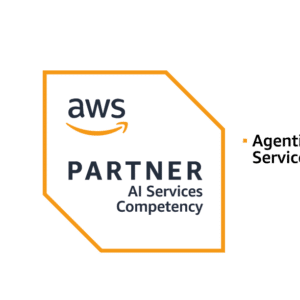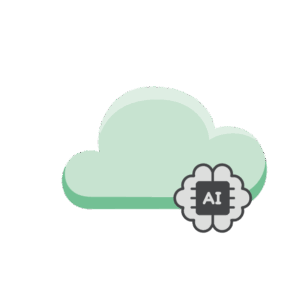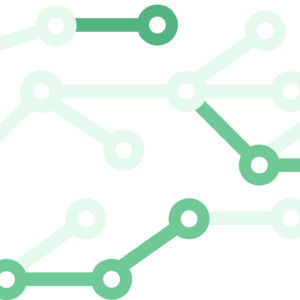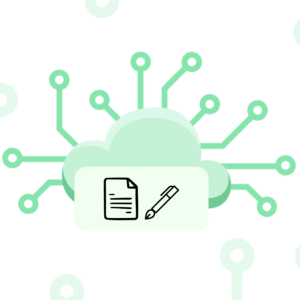
In the realm of cloud computing, security breaches can be both intricate and costly, but here’s a statistic that might catch you off guard: according to industry reports, the average cost of a data breach in 2020 skyrocketed to $3.86 million. This stark number serves as a wakeup call, illuminating the significance of robust cloud security practices. Amazon Web Services (AWS) emerges as a paragon in this landscape, wielding a sophisticated AWS security architecture to empower you with a formidable security blanket. Within AWS’s cloud environment, every customer, regardless of size, inherits the benefits of a platform built upon the highest standards of security. This includes the most stringent AWS security controls devised to shield your applications and data, alongside AWS security monitoring and alerting systems, ensuring continuous vigilance over your cloud-based assets. Prepare to delve into the facets of AWS security that fortify the infrastructure underlying your business’s digital presence, so you can deploy and innovate with confidence and clarity.
Key Takeaways
- Comprehend the importance of robust cloud security in minimizing the financial ramifications of data breaches.
- Gain insight into how AWS’s advanced security architecture provides a protective foundation for businesses of all sizes.
- Learn about the systematic security controls AWS offers to defend your applications and retain data integrity.
- Discover how AWS’s proactive monitoring and alerting fortifies your cloud infrastructure against emerging threats.
- Understand the critical role of AWS in ensuring secure cloud deployment and fostering an atmosphere of innovation and growth.
Understanding the AWS Shared Responsibility Model
When stepping into the world of cloud computing, you must understand the AWS Shared Responsibility Model, a critical concept shaping AWS security compliance and user practices. Essentially, this model underscores a cooperative paradigm, clarifying the line that demarcates the security obligations of Amazon Web Services (AWS) from your own as the user. In this paradigm, while AWS ensures the robustness of the cloud infrastructure at its core, you are in charge of safeguarding your operations within this secured environment.
Why does this matter for your business? It grants you the flexibility to tailor AWS security solutions directly to your specific needs. Moreover, achieving an AWS security certification signifies your adeptness in managing the security of your workload per AWS’s high standards. Let’s delve into what AWS is responsible for, and what falls under your purview.
- AWS Responsibilities – AWS takes control of the cloud itself. This includes the hardware, software, networking, and facilities that operate AWS services.
- Your Responsibilities – Your tasks revolve around managing the guest operating system (including updates and security patches), other associated application software, and configuring AWS-provided security group firewalls.
| Security Aspect | Responsibility of AWS | Responsibility of User |
|---|---|---|
| Physical Layer | AWS ensures the physical security of data centers. | N/A |
| Infrastructure Network | Maintenance and security of the foundational cloud infrastructure. | Encryption and network access control list (ACL) configurations. |
| Virtualization Layer | Secure hypervisor layer of the infrastructure. | Security group and network ACL setups for individual EC2 instances. |
| Application Layer | N/A | Application security, including updates and patches. |
| Data Encryption | Providing encryption options and key management solutions. | Implementing and managing data encryption in transit and at rest using provided tools. |
With a keen understanding of the Shared Responsibility Model, you’re better equipped to navigate the comprehensive AWS security services available. By acknowledging your role in safeguarding your data and workloads, you magnify the efficacy of AWS’s inherent security measures, crafting a fortified and compliance-ready architecture. As you pave your pathway in the cloud, remember that AWS security compliance is not just about the technology. It’s also about how you leverage these tools and services to build a secure and resilient operational landscape.
The Architecture of Security in AWS
When you leverage the cloud services provided by AWS, you’re investing in an architecture engineered with a paramount focus on security and resilience. AWS’s commitment to upholding the highest standards of security is evident in every layer of its infrastructure, ensuring that your applications and data are protected with AWS security best practices and a robust AWS security architecture.
For a deep dive into the specifics of AWS security tools and best practices, consider Strategies and Tools for a Successful Migration to AWS. This article can give your readers a practical perspective on integrating AWS security features effectively.
Designed for High Security and Resilience
With AWS, you enter an environment built from the ground up for peak resilience. Embracing the pillars of AWS security compliance, regions are layered with multiple isolated Availability Zones, which are supplemented by unique offerings such as AWS Local Zones for low-latency services and AWS Outposts for integrated hybrid experiences. Each aspect contributes to an unyielding security-centric foundation that allows for confident innovation and uncompromised business continuity.
Advanced Security Features and Services
At your fingertips are over 300 sophisticated AWS security tools and services, bridging any gap between your security needs and the latest in protective technology. AWS’s rich portfolio of security services ranges from threat detection and response to data encryption tactics, all designed to empower you to construct the most secure version of your cloud-based platforms.
Strategies for Redundant and Layered Defenses
Adhering to AWS security compliance, the multi-faceted AWS security architecture enforces a defense-in-depth strategy that is key for safeguarding against evolving threats and vulnerabilities. Such meticulous care ensures each layer of the network design and systems configuration contributes fundamentally to a strong and resilient protection framework, mitigating risks and enhancing your cloud’s defense capabilities.
Implementing AWS Security Best Practices
When you engage with the AWS platform, leveraging its comprehensive suite of AWS security services is essential for protecting your cloud infrastructure. A crucial step in this process is incorporating best practices that align with standardized AWS security controls and measures. Through vigilant implementation, you can enhance your system’s resilience against potential threats.
Identity and Access Management (IAM)
AWS security compliance underscores the significance of robust Identity and Access Management (IAM) to fortify your cloud resources. IAM is instrumental in effectively managing user access, allowing you to assign granular permissions while ensuring that only authenticated users can interact with your AWS environment. This level of precision in defining permissions and identities is pivotal in controlling access to data and applications, and consequently, in safeguarding your cloud infrastructure.
Automating Security With AWS Tools
Embrace the transformative power of AWS security automation to streamline your security processes. This strategic approach empowers your team to automate responses to common threats, facilitating the deployment of security measures more efficiently across your systems. With AWS tools at your disposal, you can shift your focus from routine security tasks to critical business objectives, while still upholding a secure and compliant AWS environment.
Continuous Compliance and Monitoring
Continuous AWS security monitoring and alerting form the backbone of an adept defense strategy. AWS’s robust monitoring framework ensures that you are always informed about your compliance status and security situation. Automated tools proactively detect anomalies, deliver insights, and foster a preventative security posture, enabling your organization to respond instantaneously to incidents and maintain uninterrupted compliance.
Addressing common security concerns, Remedies for Common AWS Cloud Security Misconfigurations offers guidance on avoiding common pitfalls and strengthening your cloud security posture.
Conclusion
In an era where digital threats are constantly evolving, AWS security best practices serve as a beacon, guiding your path to a secure and resilient cloud presence. Embracing AWS’s robust and dynamic security capabilities allows you to innovate freely, knowing that the backbone of your operations is protected by a fortress of cloud security solutions. As you pursue digital transformation, AWS’s security services function as an extension of your team, fortifying your assets and enabling growth.
With AWS security solutions and a vast pool of partner networks, you have the arsenal to defend against rapidly developing cybersecurity challenges. By harnessing AWS’s infrastructure, you align with a platform recognized for its security emphasis, highlighted by proactive measures and continuous advancements. AWS security certification underscores this commitment, offering you a clear route to validating and enhancing your organization’s defense mechanisms.
Your journey in the AWS ecosystem is much more than just migration; it is a commitment to maintaining a vigilant stance against threats. AWS equips you with an intricate tapestry of controls, ranging from identity management to encryption and incident response. Leveraging such an extensive array of AWS security services empowers you to create not just a secure operation, but also a culture of security-first mindsets within your organization. As AWS continues to set benchmarks in cloud security, your endeavor to adhere to stringent security protocols reaffirms your dedication to safeguarding your cloud infrastructure.
FAQ
What are the fundamental components of AWS security architecture?
AWS security architecture is built to be secure by design, incorporating layered defenses like network segmentation, encryption, access controls, and threat detection. It is reinforced by best practices, ensuring data protection, infrastructure security, compliance requirements, and continuous monitoring.
What are AWS security controls and how do they protect my infrastructure?
AWS security controls are preventive, detective, and responsive measures implemented within the AWS cloud. They include IAM policies, security groups, network ACLs, encryption services, and monitoring tools like AWS CloudTrail and Amazon CloudWatch, which together help to safeguard your infrastructure.
How does AWS ensure real-time security monitoring and alerting?
AWS offers services such as Amazon GuardDuty, AWS CloudTrail, and AWS Config, which provide continuous monitoring of your cloud environment. They enable real-time detection of suspicious activity or unauthorized changes, sending alerts to enable quick remediation.
What certifications and compliance standards does AWS adhere to?
AWS complies with a range of certifications, including ISO 27001, PCI DSS, HIPAA, FedRAMP, and GDPR, among others. This ensures that their infrastructure and services meet rigorous security standards and best practices, which can be leveraged by customers to maintain compliance with various regulatory requirements.
What role does automation play in AWS security?
Automation in AWS security enables consistent application of security policies, rapid response to potential threats, and reduces the risk of human error. Automated security checks, incident response, and compliance workflows are essential to maintaining a strong security posture at scale.
LinkedIn: https://www.linkedin.com/company/dinocloud
Twitter: https://twitter.com/dinocloud_
Instagram: @dinocloud_
Youtube: https://www.youtube.com/c/DinoCloudConsulting



